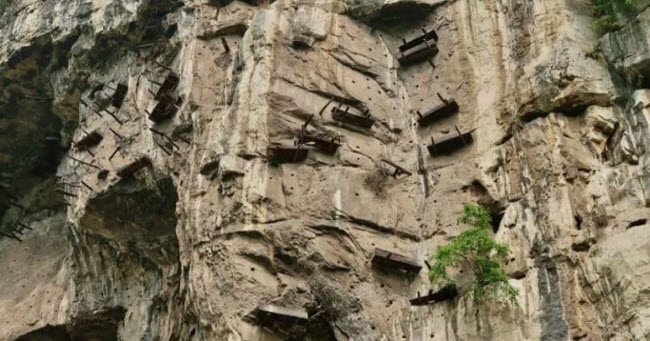As human societies evolved through the ages, they began to grasp the concept of death and the importance of honoring those who departed for the afterlife. Numerous funeral practices emerged globally, reflecting diverse cultural beliefs and customs, some of which might seem quite peculiar. Over time, many of these rituals faded, but their remnants remain, one of which is the enigmatic hanging coffins found in China. These ancient burial containers, suspended on mountain cliffs, have fascinated scientists and historians who strive to uncover the reasons behind these unusual practices.
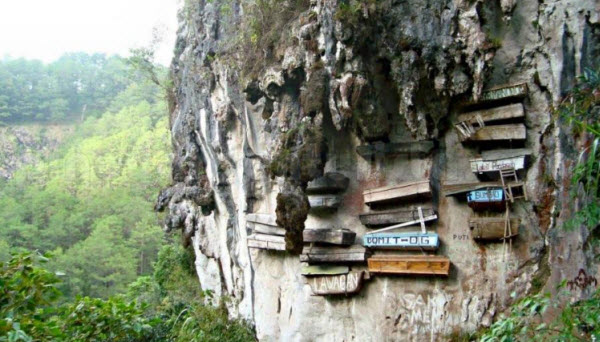
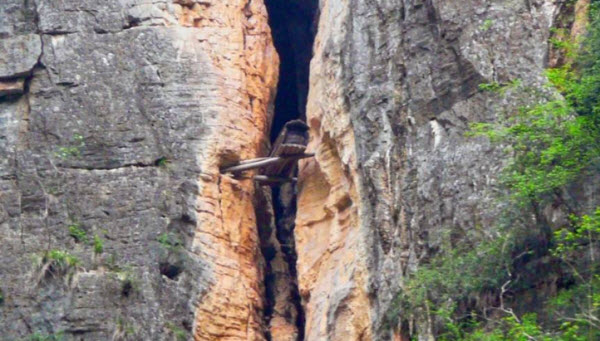
In China, particularly across the remote mountains and valleys of the Sichuan, Yunnan, and Guizhou provinces, visitors might be astonished to find coffins hanging in mid-air on steep mountain slopes. Some of these coffins dangle from ropes, others are wedged in crevices or carved into caves within the mountains, while others are mounted on rocky outcrops or wooden beams anchored into the rocks. These hanging coffins create a dramatic and eerie sight that has puzzled scholars for decades.
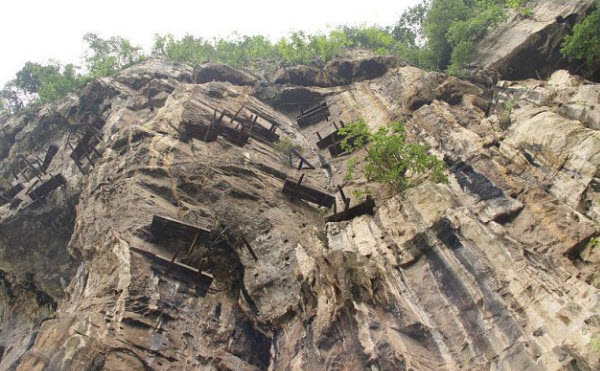
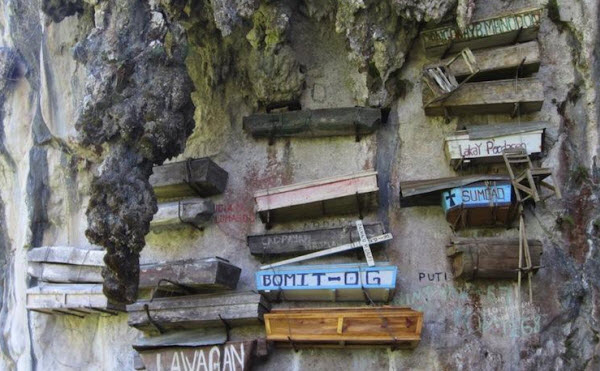
Upon examining the hanging coffins closely, one can observe their diverse sizes, shapes, and ages, with the oldest dating back over 3,000 years and the most recent around 1,500 years ago. Each coffin is carved from a single piece of wood, treated and oiled to protect against the elements. Some are adorned with decorations and coverings. These coffins either hang from cliffs, rest on ledges or wooden beams fixed in the rock, or are nestled inside caves that are difficult to access, whether natural or man-made. Many of these coffins still contain human remains along with personal items such as clothing remnants, ceramics, jewelry, musical instruments, knives, jade figurines, and other possessions of the deceased. It is notable that these coffins were elevated with great effort using unclear methods, containing either single or multiple bodies.
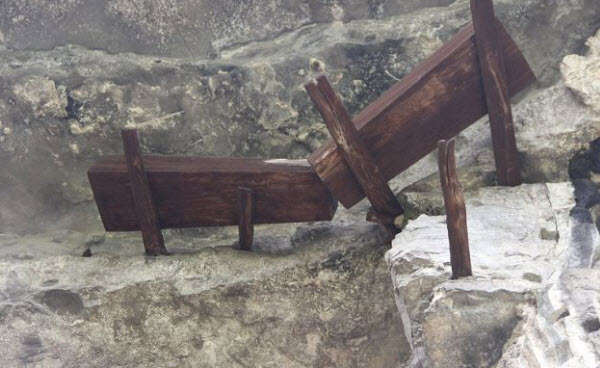

Many attribute these hanging coffins to the Bo people, who lived in these regions around 3,000 years ago in Sichuan and Yunnan. They mysteriously disappeared around 400 years ago, with some suggesting they fled persecution as an ethnic minority following the rise of the Ming Dynasty. Other ethnic groups, such as the Juyoi people, who also inhabited similar remote areas, are believed to have had similar burial practices. These coffins remained hidden until the 1970s, when their discovery sparked considerable intrigue and confusion.

To this day, the purpose of these hanging coffins, numbering over 300, remains unclear. Despite the considerable effort required to hoist them hundreds of meters into the air, and the complexities of forming caves and securing wooden beams in rocks, the methods used are still a mystery. Theories suggest they might have been lowered from the top of the mountain or raised using advanced scaffolding, and some even speculate the use of actual magic. The most plausible theory is that elevated graves would be less prone to looting and desecration by wild animals and thieves, and would avoid occupying land needed for agriculture. It has also been observed that the higher the coffins are placed, the more lavish their contents, suggesting they might have been intended to bring the deceased closer to the heavens or to signify higher social status. Other theories propose they were a means to better preserve the bodies or to display one’s status in society.

However, due to the lack of written records regarding these customs, the true nature of the hanging coffins remains elusive. Similar burial practices have been discovered in the Philippines and Indonesia, though any connection between these sites remains unclear.
In recent years, these hanging coffins have faced deterioration, with many falling from their rocky perches due to worsening conditions. Some have been vandalized or desecrated by visitors, with one coffin found containing a cigarette left in a skull’s mouth and others destroyed by fire. Despite the damage and the challenges in preserving these ancient relics, efforts to protect and study this heritage continue.
